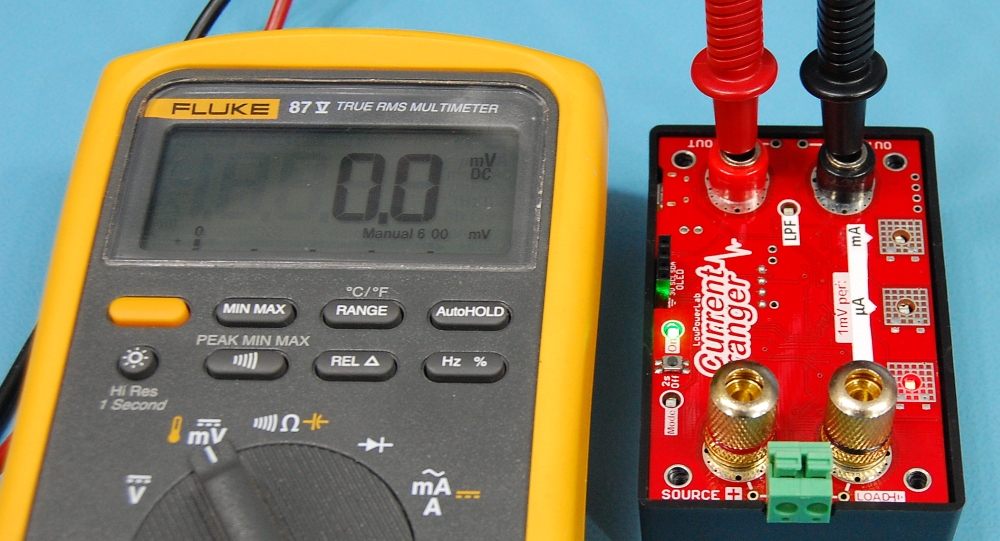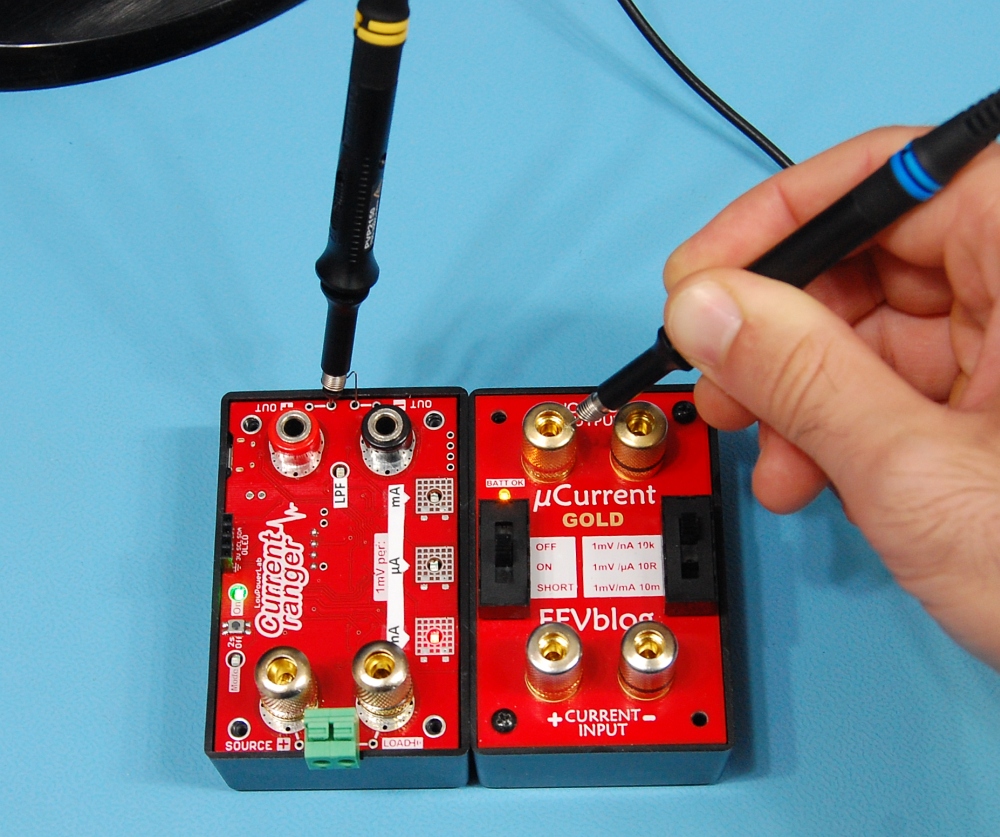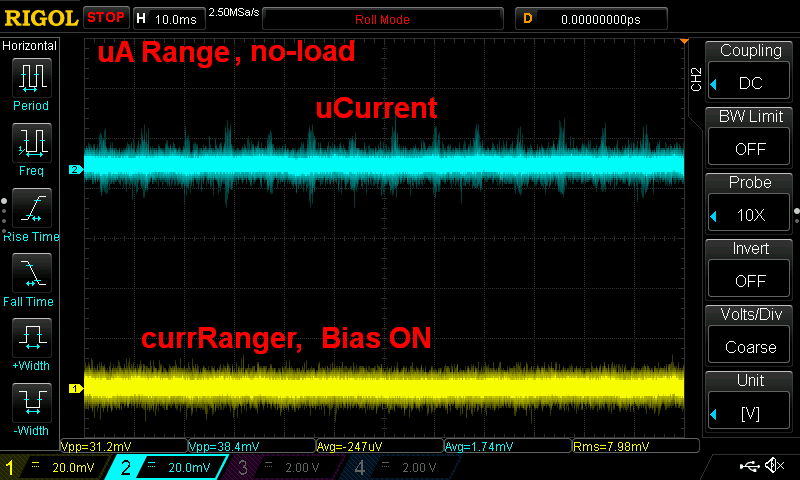Noise, DMM & scope measurements
Here we take a look at some sample scope captures of the different modes of operation.
The CurrentRanger has a low impedance output and for general purpose DMM (digital multimeter) readings, just touching the output terminals with the DMM’s probes is enough to get an accurate reading. All ranges should read a close to 0v output with no-load at the input terminals. Here’s a no-load reading on the nA range with a Fluke 87V:
With scope measurements, it’s important to minimize inductance of the probe ground which can easily pick up mains and other switching noise in your environment. Here’s how to use your scope when doing measurements (this is a good practice in general):
- Remove the probe’s ground lead and use the short ground spring instead. This reduces coupled into the probe
- Set your scope and your probe to 10x attenuation
In addition to all other outputs, there is a dedicated probing set of pinholes for scopes:
Scope capture / side by side measurements
A few measurements are taken side by side for comparison. In this case, the current meters are set to the closest equivalent settings wherever possible, and the scope settings are the same. The following setup is used, with probes using their ground spring connection on the negative [‒] terminal to minimize ground noise pickup:
Here are some sample no-load measurements, with probes used as illustrated above:
The nA range is the most sensitive to noise pickup, especially mains noise. Here is a sample scope capture in the nA ranges, with no-load at the inputs, without LPF, and with LPF activated:
Here are some fast transient current captures of a Moteino + RFM69CW radio packet transmission:






